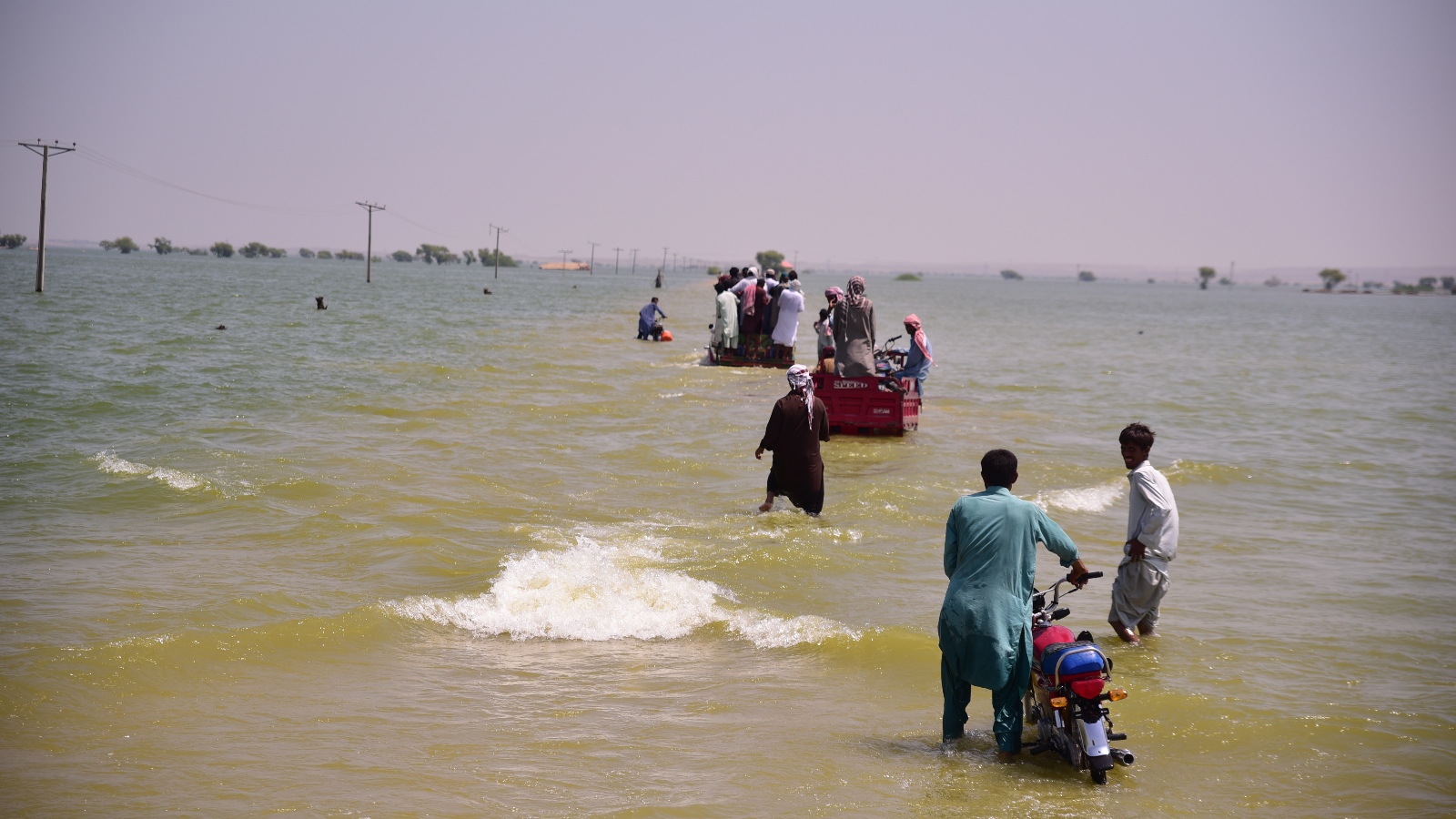This summer, four times more rain than normal fell on southern Pakistan, causing widespread flooding that left a third of the country underwater. The scale is hard to wrap your head around: The deluge has affected 33 million people — 15 percent of Pakistan’s population — and has turned villages into isolated islands. The death toll stands at 1,500.
It sounds like just the kind of unfathomable disaster that wouldn’t have happened without climate change. According to new research released on Thursday, the hotter planet played a role by making the flooding worse — though it wasn’t the only factor.
Scientists from the World Weather Attribution group found that climate change likely intensified the overall rain by 50 percent this summer. At the monsoon’s worst — the heaviest five-day period in the southern provinces of Baluchistan and Sindh — it’s believed that global warming increased the total rain by up to 75 percent.
This summer (call it danger season) has been filled with drought, fires, floods, and other unusual extreme weather. Researchers have been drawing more and more connections to the overheating planet. The heat wave that sizzled across India and Pakistan this spring, bringing temperatures above 100 degrees F for days, was made 30 times more likely because of greenhouse gas emissions, according to World Weather Attribution. The group also found that the record-breaking July heat wave in the United Kingdom would have been “extremely unlikely” without climate change.
Earlier events primed Pakistan for devastation, some of them related to the changing climate. For example, the conditions for a wetter-than-usual monsoon season were amped up by hotter-than-usual weather, because warmer air can hold more moisture.
But a humanitarian crisis isn’t created by weather alone — it’s also created by structural failures to protect people living in harm’s way. The research found that the devastation in Pakistan was driven largely by the country’s outdated river management system and how close people lived to floodplains. A high poverty rate, along with political and economic instability, made Pakistan further unprepared to deal with the magnitude of this year’s monsoon rains. The average income is just over $1,500 per person, while it’s closer to $2,300 in neighboring India, according to data from the World Bank.
“It is important to remember that this disaster was the result of a vulnerability that was constructed over many, many years and shouldn’t be seen historically as the outcome of one sporadic sudden event,” Ayesha Siddiqi, a University of Cambridge researcher involved in the analysis, told the Washington Post.
Scientists managed to complete this research while the catastrophe in Pakistan was still unfolding. By comparing established models of a world without climate change to the real world, they were able to release a rapid-fire analysis of global warming’s role. The thinking behind this kind of swift attribution study, which isn’t subject to the usual rigorous and slow-moving peer review process, is that it can help people see climate change not as a future threat, but as a present danger.
Studying the disaster is one thing; dealing with its fallout is another. Though the floodwaters in Pakistan are beginning to recede, it could be months until the country fully dries up. The rains are estimated to have caused $10 billion worth of damage, leaving Pakistan, a country that emits less than 1 percent of global greenhouse gas emissions but is one of the most vulnerable to climate change, dealing with the consequences of mainly wealthier countries’ emissions.




